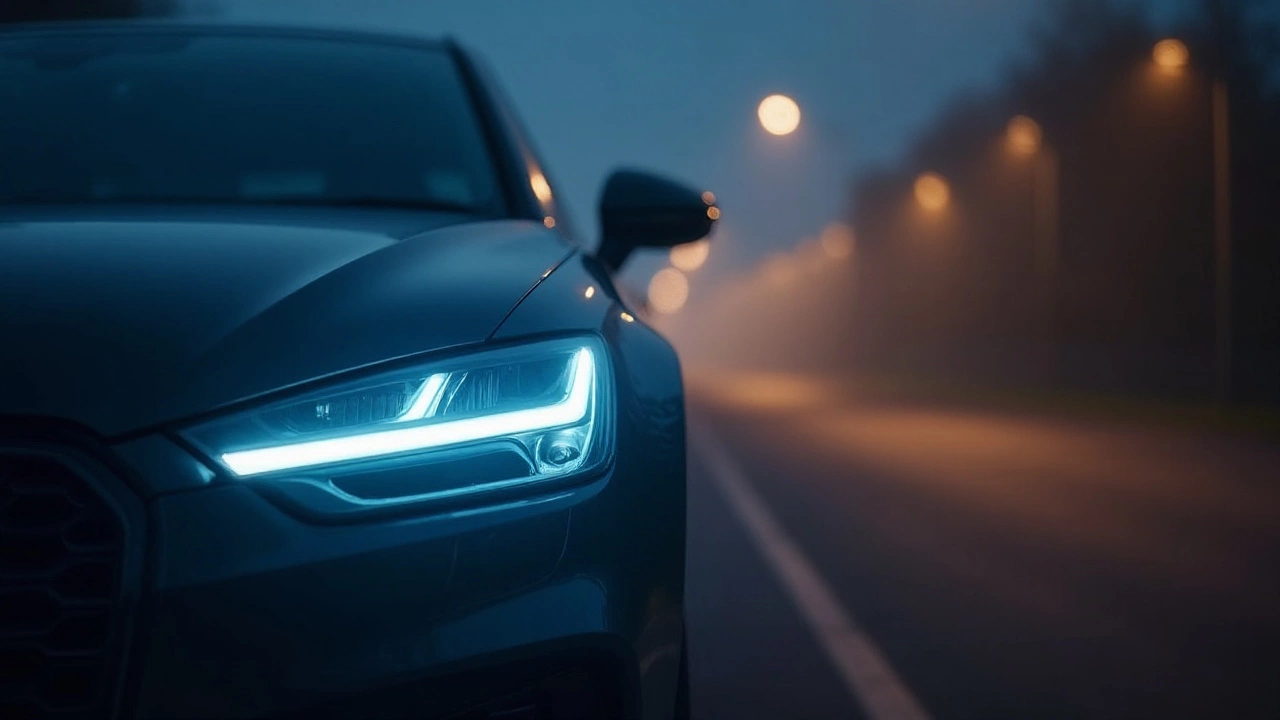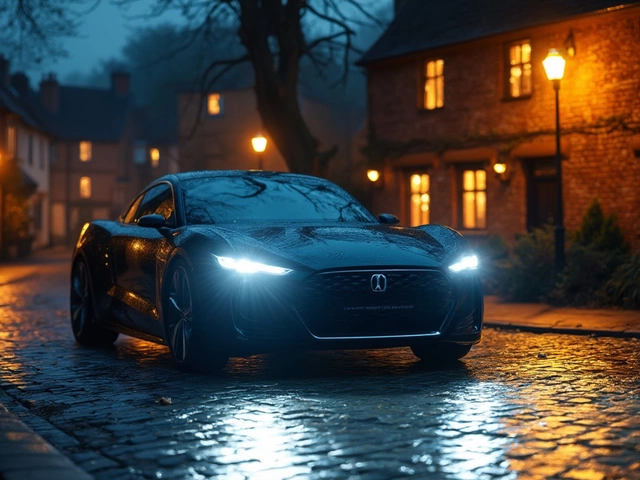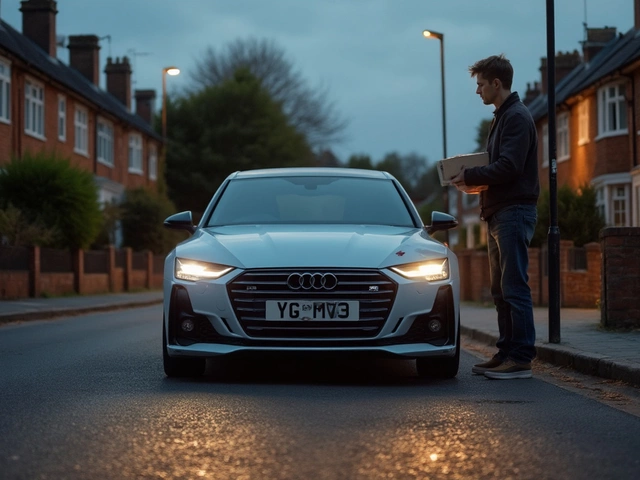Choosing the right headlight bulb for your vehicle is an essential aspect of car maintenance, yet it often slips between the cracks. In recent years, LED technology has transformed how we light up the road, offering a compelling combination of brightness and efficiency. However, while it's tempting to go for the brightest option available, it's critical to ensure your choice remains within legal limits. Not all high-intensity bulbs pass the regulatory muster, so understanding these boundaries can save you from frustrating encounters with the law.
This article walks you through the maze of regulations surrounding headlight brightness and sheds light on the best options available that won't compromise your safety or legality. We'll explore LED technology's advantages, highlight top bulb recommendations, and provide handy tips on installation and maintenance for a luminous yet compliant driving experience.
- Understanding Headlight Regulations
- LED Headlights Explained
- Top Choices for Bright Legal LED Bulbs
- Factors to Consider When Choosing LED Bulbs
- Installation Tips for Best Performance
- Maintaining Your LED Headlights
Understanding Headlight Regulations
Navigating the realm of headlight regulations requires an understanding of both national and regional guidelines, which ensure safety for not only the driver but also other road users. In the United States, the Department of Transportation (DOT) mandates specific standards for headlight brightness, aiming to balance sufficient road illumination with avoiding glare that could blind oncoming traffic. One prominent requirement is that headlight bulbs should not exceed a luminous intensity of 3,000 lumens, a key threshold distinguishing between legal and illegal LED headlights.
Adherence to these regulations becomes trickier with the availability of aftermarket LED headlights. While they promise superior performance, many of the brightest variants are non-compliant with DOT standards. It’s crucial to check for DOT certification marks when purchasing to ensure your new lights won’t land you with a ticket or reduced safety on the road. Different countries have varying limits, for example, European standards governed by ECE regulations also maintain similar yet slightly varied measurement criteria, controlling the color temperature and beam pattern of LED bulbs.
The intricacies of these rules often cause confusion among car enthusiasts looking for an upgrade. As advocated by various automotive safety organizations, ensuring compatibility between your vehicle and chosen headlight bulbs is paramount. A well-known quote by the International Automotive Lighting Association states:
“Choosing illumination is not just about personal preference, but about ensuring compliance that guarantees safety for all.”In line with these standards, one must also be aware of the Kelvin rating, which pertains to the color of the light emitted. Typically, you should opt for headlights within the 4000K to 6500K range for optimal legality and visibility.
Interestingly, there is often a misconception about the relationship between brightness and color. It’s the combination of these factors that truly define the legal threshold. Misaligned or improperly set up headlights, even if technically legal, can cause issues with glare, emphasizing the necessity of professional installation and periodic checks. To aid in choosing legally compliant lights, it can be helpful to refer to DOT or ECE websites for lists of approved products or to consult with experts at automotive stores.
The key takeaway is the balance between enhancing visibility and adhering to regulations. With technological advancements in LED headlights, understanding and adhering to these regulations becomes all the more important. Choosing the brightest legal bulbs not only optimizes your driving experience but also demonstrates responsible vehicle ownership, ensuring everyone’s safety on the road. As technology continues to advance, it is expected these regulations will evolve, underscoring the importance of staying informed and vigilant about compliance.
LED Headlights Explained
Light Emitting Diodes, or LED headlights, have become a popular choice among car enthusiasts and everyday drivers alike, thanks to their incredible brightness, energy efficiency, and long lifespan. Unlike traditional halogen bulbs that use a heated filament to produce light, LEDs use a semiconductor to convert electricity directly into light. This process is not only more efficient but also generates a light that's crisper and more focused. This focus helps in illuminating the road more precisely and providing better visibility during nighttime driving. Cars with LED headlights can often be spotted due to the distinctive cooler hue they emit, which is typically close to daylight white.
A significant advantage of LED technology is its efficiency. LEDs consume far less energy compared to halogen or even some HID bulbs, which means they exert less strain on the vehicle's electrical system. This reduced power drain translates to potential fuel savings, particularly beneficial for electric vehicles where every watt counts. However, while the initial cost of LEDs may be higher, their longevity usually compensates for this. LED headlights can last anywhere from 20,000 to 50,000 hours, as opposed to halogen bulbs, which might only last around 1,000 hours. This makes them a cost-effective choice over time, reducing the frequency of replacements.
An additional layer of appeal with LEDs is their versatility. They can be fashioned into a myriad of designs, allowing manufacturers to create signature lighting aesthetics that differentiate their models. Recent trends show automakers increasingly using LEDs for various vehicle lighting applications, from headlamps and interior lights to indicators and tail lights. Did you know that Audi was among the first mainstream car manufacturers to adopt full LED headlights back in 2008? Their innovation set a trend that's now commonplace across the automotive industry. Many drivers also appreciate the instant on/off effect of LEDs, providing immediate full brightness without any warm-up time, which can be crucial in situations requiring quick signaling.
However, as with any technology, LEDs aren't without their drawbacks. One commonly noted issue is their performance in cold weather. Unlike halogens, which naturally warm up and can help prevent snow accumulation on the headlight lens, LEDs typically don't generate enough heat to clear away snow buildup effectively. To address this, some manufacturers integrate heating elements to combat this problem, ensuring consistent performance in all weather conditions. Furthermore, LED headlights must be correctly aimed to avoid dazzling other drivers, making precise installation crucial. Incorrect alignment can lead to glare issues, prompting potential legality concerns.
"The adaptability and efficiency of LEDs make them a front-runner in headlight technology," says Dr. Emily Porter, an industry expert in automotive lighting technologies. "What's fascinating is how rapidly this sector has evolved, offering innovations that align with modern demands for sustainability and design freedom."
The choice of LED headlights over traditional options involves weighing these benefits and limitations carefully. For many, their advantages in terms of efficiency, lifespan, and brightness overwhelmingly justify their selection. As LED technology continues to evolve, it's likely we'll see even more advancements that enhance vehicle lighting solutions, potentially overcoming current limitations. Whether you’re searching for better illumination on dark country roads or a way to give your car a modern edge, understanding how LEDs work is key in making an informed choice for your vehicle's lighting needs.
- LED headlights are energy-efficient and offer longer lifespans.
- Distinctive cooler hues improve nighttime visibility.
- LEDs are customizable for various lighting applications in vehicles.
- They may face challenges in cold climates due to insufficient heat generation.
- Proper alignment is crucial to avoid glare and ensure legal compliance.
- Their initial cost is higher but often compensated by durability.
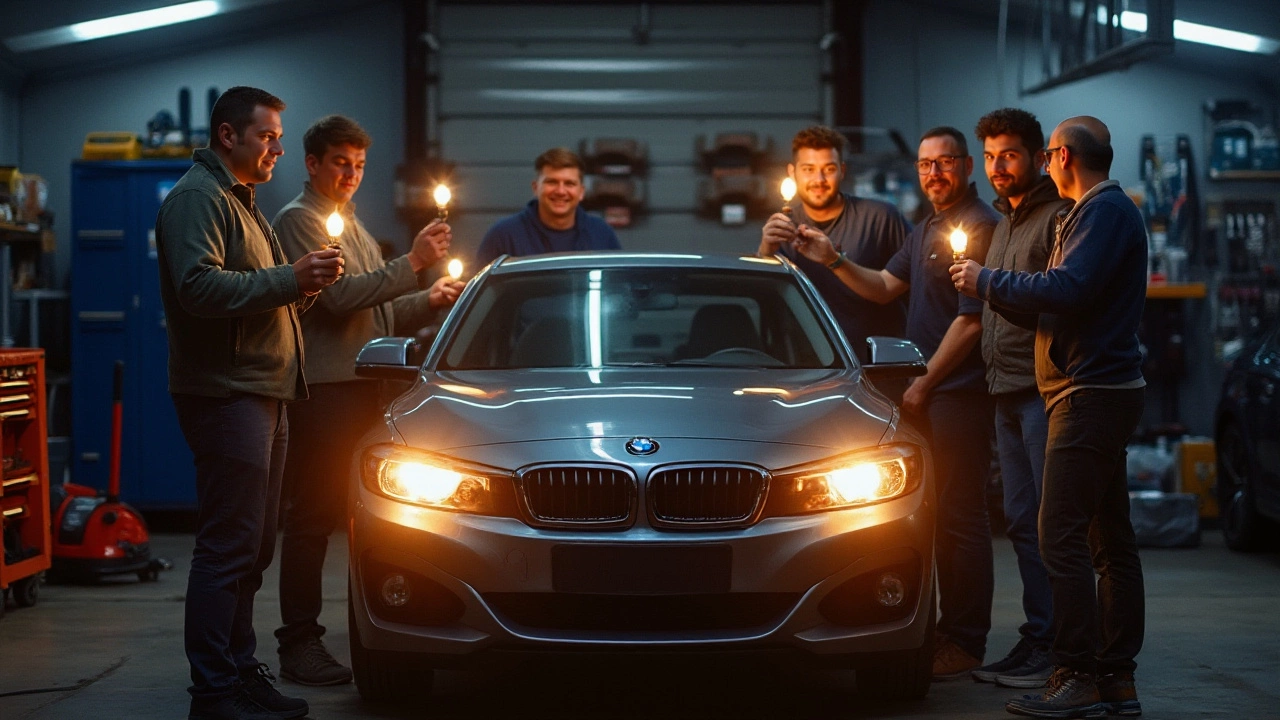
Top Choices for Bright Legal LED Bulbs
When it comes to navigating the night roads, having the brightest and most efficient LED headlights definitely makes a game-changing difference. Yet, the challenge lies in selecting bulbs that strike the perfect balance between luminosity and legality. In many regions, regulations limit the maximum brightness or use specific standards to ensure both you and other drivers on the road remain safe. As you embark on your mission to find the brightest legal bulbs, it's worth looking into well-regarded brands and models. Companies like Philips and Osram have led the charge with their forward-thinking LED technologies, bringing both durability and admirable light output to the table. Their bulbs promise enhanced visibility without being a blinding distraction to oncoming traffic, thanks to precise beam patterns that adhere to legal standards.
Philips' X-tremeUltinon gen2 LED headlight bulbs, for instance, are among the frontrunners—offering up to 200% brighter light compared to standard halogen bulbs. These bulbs are not only efficient but also provide daylight-like color temperatures, around 5800K, known to reduce eye strain during long drives. Equally impressive is the Osram Night Breaker Laser, a halogen counterpart that has made significant strides in bridging the gap with LEDs, primarily due to its enhanced filament and pure xenon gas. For LED enthusiasts, the Philips Ultinon Essential also provides a reliable option that melds performance with compliance, producing a focused beam that stays within legal brightness thresholds.
Another key consideration when choosing the brightest bulb is the bulb type. While H7 and H11 are popular choices in newer car models, the traditional 9005 and 9006 variants still have a significant presence in older vehicles. These designations are more than mere numbers—they represent crucial differences in fit and performance, meaning it's vital to select precisely what's compatible with your vehicle's specifications. Before purchasing, always check your car manual or look up manufacturer guidelines to avoid costly mistakes.
Of course, brightness isn’t the only factor. Heat dissipation is another crucial element that impacts both the lifespan and performance of your LED headlights. Modern high-quality LED bulbs often incorporate cooling elements such as heat sinks or fans, which ensure the bulb doesn’t overheat during extended use. Notably, some premium options use advanced cooling systems to guarantee that the heat doesn’t rise to a level that could potentially compromise the bulb's longevity.
"While ultra-bright LEDs offer superior visibility, it's essential that drivers select headlights that are legal and designed specifically for road use," advises John Smith, a lighting engineer with three decades of experience in automotive technologies. "I always tell drivers to consider both raw output and proper alignment when shopping for new bulbs."
Additionally, investing in reputable brands can protect you from the pitfalls of substandard products that might not last as long or deliver the promised benefits. Many trusted manufacturers back their products with warranties, giving you peace of mind and ensuring consistent performance over time. Always keep in mind that the best LED headlight isn’t necessarily the one that produces the most light, but the one that offers the right beam pattern, longevity, and legal compliance. Therefore, while there are myriad options on the market today, focusing on these parameters will help you make an informed choice that enhances your vehicle safety and ensures a comfortable driving experience.
Factors to Consider When Choosing LED Bulbs
When embarking on the quest for the perfect LED headlight bulbs, several crucial factors must be weighed to ensure you get the best bang for your buck. At the top of the list, brightness naturally draws attention, but it's more than just about casting a powerful beam. While it's tempting to go for the high-lumen count, staying within the legal confines ensures you’re not just lighting your way but also complying with road safety standards. Indeed, in many regions, the maximum allowable brightness for headlights is specified by law, making it imperative to understand these specifications and how they vary.
The color temperature of the LED bulb is another pivotal factor. Measured in Kelvins, this reflects the hue of the light emitted and can significantly impact visibility. Typically, 5,000 to 6,000K is considered the sweet spot for LED headlights, as it closely mimics natural daylight, providing sharp visibility without the faux-pas of blinding oncoming drivers. This range also tends to reduce eye strain, an essential consideration for frequent night drivers or those embarking on long road trips.
Compatibility with your vehicle is another key aspect not to be underestimated. Each car model can come with its nuances, so ensuring your chosen bulb fits seamlessly into the existing socket and aligns with the electrical system is fundamental. Consult your vehicle's manual or reach out to your car manufacturer if you're unsure about the specifications required for LED headlights. Some vehicles may require additional components like CAN bus adapters to prevent electrical interference, a detail often overlooked.
"A precise match in bulb type and socket size is crucial to performance; otherwise, you risk damage or reduced lifespan," notes John Palmer, editor at Automotive Light Magazine.
Long-term durability is another enticing trait of LED bulbs that shouldn’t be ignored. Often marketed for their extended lifespan, it’s pivotal to ascertain the quality and brand reputation. Premium brands often offer bulbs that withstand vibrations and heat more efficiently than their cheaper counterparts. A well-made LED bulb not only lasts longer but maintains brightness consistency, providing reliable illumination over time.
Finally, ease of installation is worth considering, especially for the DIY enthusiasts. Some bulbs are designed to be plug-and-play, making them a breeze to install without the need for special tools or professional assistance. Pay attention to the manufacturer's instructions and see if your chosen bulbs come with a user guide. For those with less confidence in their mechanical skills, choosing such user-friendly products can lead to a smooth and hassle-free upgrade to your vehicle’s car lighting system.
In summary, selecting the right LED bulbs for your vehicle involves a blend of legal, technical, and personal preferences. By prioritizing compatibility, brightness, color temperature, and brand reliability, drivers can enhance their visibility and safety significantly while complying with traffic laws.
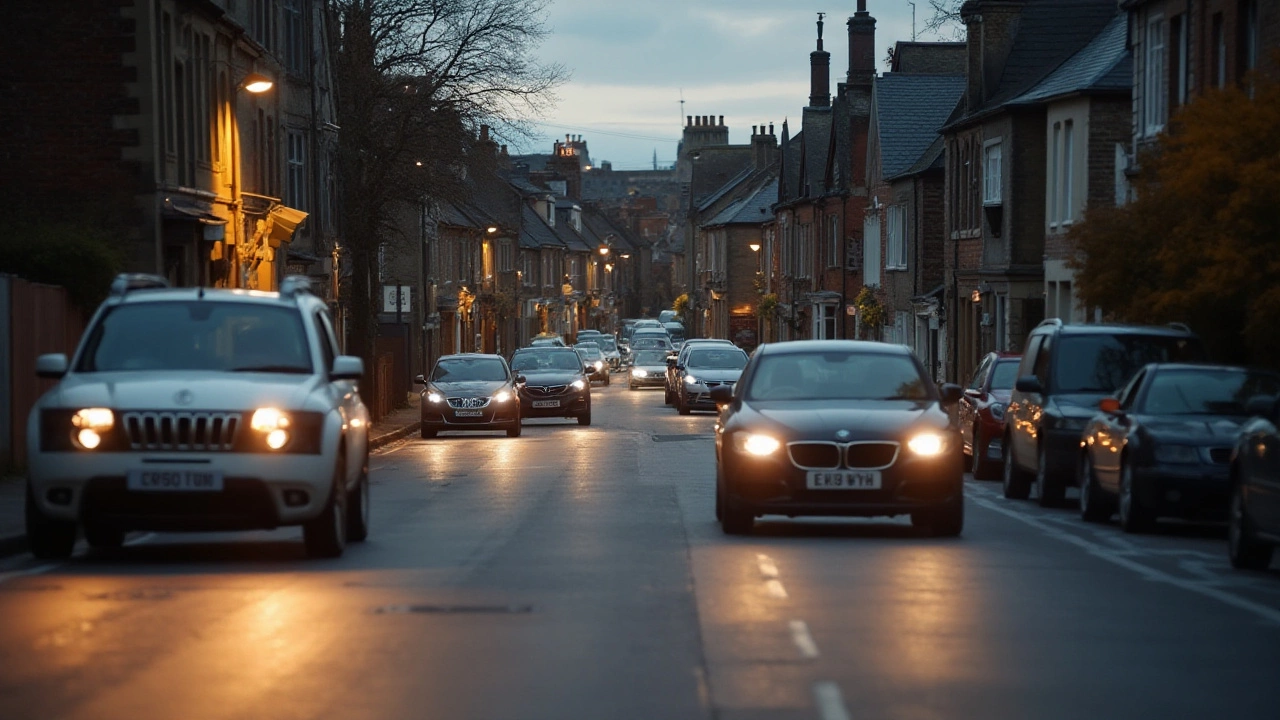
Installation Tips for Best Performance
Installing LED headlights can be a transformative experience for your vehicle, providing you with improved road visibility and a modern look. To harness the full power of your new lighting system, it's crucial to focus on proper installation techniques. The placement and alignment of the bulbs play a pivotal role in ensuring optimal performance and longevity. Start by gathering the necessary tools and ensuring your vehicle is on a stable surface to avoid any interruptions during the process. It's also beneficial to check your car’s lighting system manual for any specific instructions related to bulb replacement. This step is often overlooked but can save you from potential mistakes.
Begin with safely removing your old bulbs. This might sound straightforward, but hasty handling can damage delicate components within your headlight assembly. After switching off your vehicle, unplug the wiring harness attached to the back of your headlight bulb. If there’s a dust cover, gently remove it. Disconnect the bulb carefully without exerting too much force, as some fittings may be tight. When installing the new LED bulbs, align them just like the original ones to maintain consistent light patterns. Misaligned bulbs can lead to reduced visibility and may cause glare that disturbs other drivers. It’s always wise to test and adjust the alignment of your headlights after installation using a flat and level surface like a garage door to avoid these issues.
After placing the bulbs, securely reconnect the wiring harness and reattach any dust covers you removed earlier. Giving all connections a final check ensures they are snugly fit, as loose connections can lead to headlights flickering or even failing altogether. Remember, while high-intensity headlights offer great visibility, excessive brightness may not always mean better safety. Quoting automotive lighting specialist Dr. Lisa Thompson, "Properly aligned headlights reduce glare and enhance visibility, promoting safer night driving conditions." Consider adjusting the headlight angle or performing regular checks to maintain the ideal beam pattern. These changes ensure your new LED headlights are both effective and compliant with road safety regulations.
Pay attention to the cooling systems of LED bulbs too. Many of these bulbs come equipped with fans or heat sinks to dissipate heat efficiently, ensuring they do not overheat and have a longer lifespan. Keep these cooling mechanisms unobstructed from dirt and debris that can accumulate over time, potentially hampering performance. If you observe any performance issues, internally examining the fan and surrounding areas can be quite revealing. Lastly, maintaining your headlights is as much about aesthetics as functionality. Clean the lens periodically using non-abrasive cleaning agents to prevent dirt build-up and oxidation, which can obscure light output. By taking these steps, you’ll not only ensure that your LED headlights function at their best but also contribute positively to safe nighttime driving experiences.
Maintaining Your LED Headlights
Proper maintenance of your LED headlights not only prolongs their lifespan but also ensures optimal brightness and performance, making every night drive safer and more enjoyable. Unlike their halogen counterparts, LED headlights are designed to be more resilient and energy-efficient, but they are not entirely maintenance-free. To keep your lights shining bright and your path well-lit, it’s crucial to follow several key maintenance steps.
Start by regularly inspecting the **headlight lens covers**. Dirt and grime can quickly accumulate, clouding the lens and limiting the amount of light that reaches the road. Clean the lenses periodically with a soft cloth and a mild soap solution to avoid scratches. If you notice any fogging inside the lens, it could indicate a seal failure, in which case professional inspection is necessary. Moreover, the **LED connection points** should be checked to ensure they are snug and free from corrosion, as even small issues can impact the bulb's efficiency.
Keeping the Light Aligned
An oft-overlooked aspect of maintaining LED headlights is ensuring they remain properly aligned. Misaligned headlights not only reduce visibility but can also blind other drivers, creating hazardous conditions. Refer to your vehicle's manual for guidelines on proper alignment, or consider having a professional adjust them if you’re unsure. Some LED headlights allow for DIY alignment adjustments, making it easier to keep everything on the right track.
According to the studies published by the National Highway Traffic Safety Administration, nearly 50% of night-time accidents are due to poor visibility, emphasizing the importance of headlight maintenance. Regular checks and alignment of your LED headlights can dramatically impact your safety on the road.
Taking time each month to quickly assess the LED system's performance is essential. Pay attention to any flickering or dimming, which can be early signs of electrical issues. If such problems occur, it's advisable to have a professional take a look rather than attempting potentially risky repairs yourself. Remember, proper maintenance is an investment in your safety and the longevity of your vehicle's lighting system.
"Bright lights, safe nights – ensuring optimal headlight performance is crucial to safe driving," says John White, a renowned automotive engineer and headlight expert.

